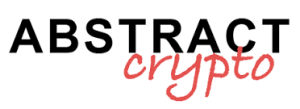Ripple and Boston Consulting Group (BCG) have released a report predicting that by 2033, the market for tokenized assets will grow from 0.6 to 18.9 trillion dollars. This represents a CAGR of 53% which suggests a significant change in the world of finance.
Ripple and BCG: the growth of the tokenized asset market from 0.6 to 18.9 trillion dollars
The new report signed by Ripple and Boston Consulting Group (BCG) revealed that by 2033, the market for tokenized assets will grow from 0.6 to 18.9 trillion dollars, with a CAGR of 53%.
“By 2033, with the reorganization of global finance, there will be a shift from $0.6T → $18.9T. Why? Regulation and institutional adoption – Real-world assets like bonds and real estate – Faster and interoperable financial infrastructure. Institutions acting now will lead the next era of finance. Get ready with our new report on tokenization with @BCG.”
The report predicts that there will be a fundamental change in the world of finance, involving tokenization. In this regard, Tibor Merey, Managing Director and Partner of BCG, said:
“Tokenization is transforming financial assets into programmable and interoperable instruments, recorded on shared digital ledgers. This enables 24/7 transactions, fractional ownership, and automated compliance.”
Ripple and BCG: the evolution of tokenization in three phases
This growth is based on an evolution of tokenization which, according to the report, will occur in three phases.
The first phase envisages that there will be a low-risk adoption, where institutions tokenize already known instruments such as money market funds and bonds.
Subsequently, with the second phase, there will be institutional expansion, with the climb towards complex assets such as private credit and the real estate sector.
Finally, with the third phase, there will be a true transformation of the market, with tokenization being incorporated into financial and non-financial products.
As key growth factors, the report highlights regulatory clarity, which already exists in markets such as the EU, UAE, and Switzerland. Soon it will also be the market of the USA.
Not only that, the evolution of tokenization will also be accompanied by a more mature technological infrastructure, including wallets and custody platforms. Another important factor is the strategic investments by banks and M&A in the fintech sector.
In this regard, Markus Infanger, SVP of RippleX, said:
“The market is transforming from tokenized assets simply sitting on the chain to integration into real economic activities”
Latest news on tokenizzazione
Recently, the blockchain ecosystem MANTRA launched a fund of 108 million dollars entirely dedicated to the tokenization of Real World Assets (RWA).
This fund will be allocated to startups operating in DeFi and tokenization, with a particular focus on emerging projects in markets of Southeast Asia and the Middle East.
In general, tokenizzazione is the conversion of real and financial assets into digital tokens, based on blockchain.
The operator of the derivatives markets, CME Group, in the USA has also tested this new concept.
In fact, at the end of March, it emerged that CME Group is experimenting with the tokenization of assets using Google Cloud Universal Ledger (GCUL) technology.
Here, the goal is to optimize the efficiency of the capital market and wholesale payments. The tests with the participants will begin in 2026.


